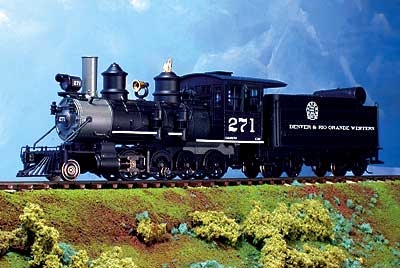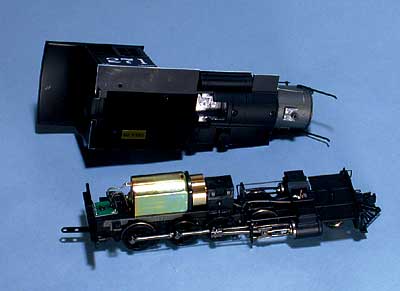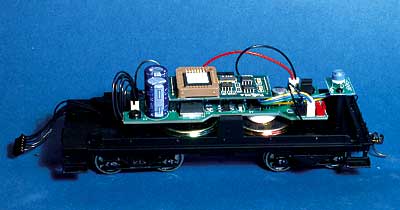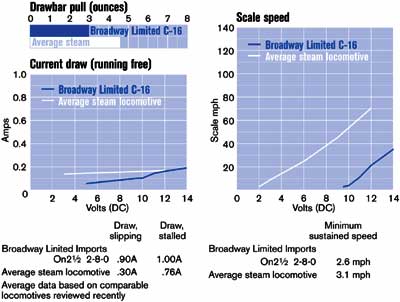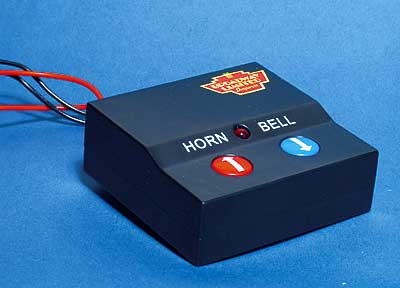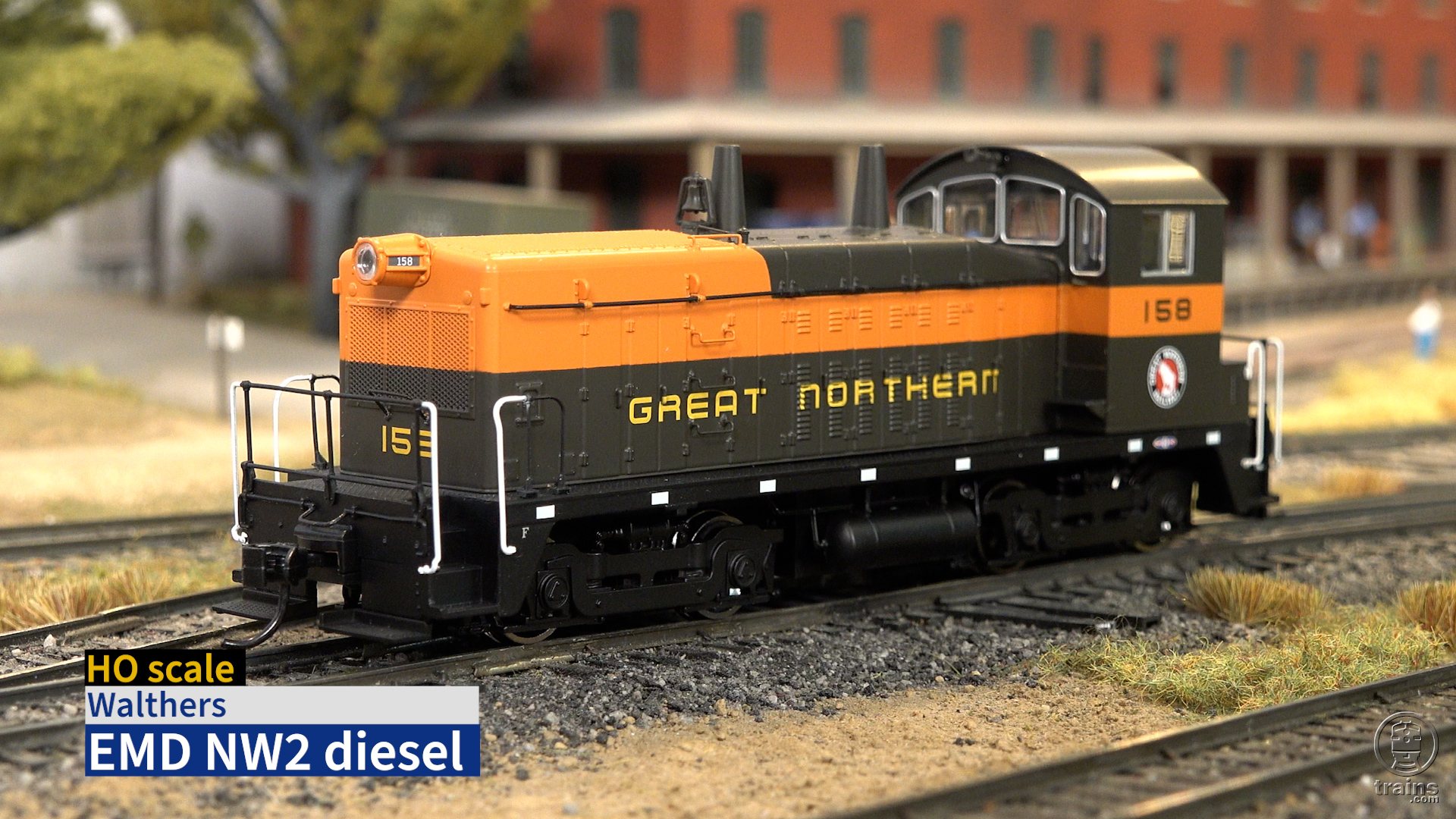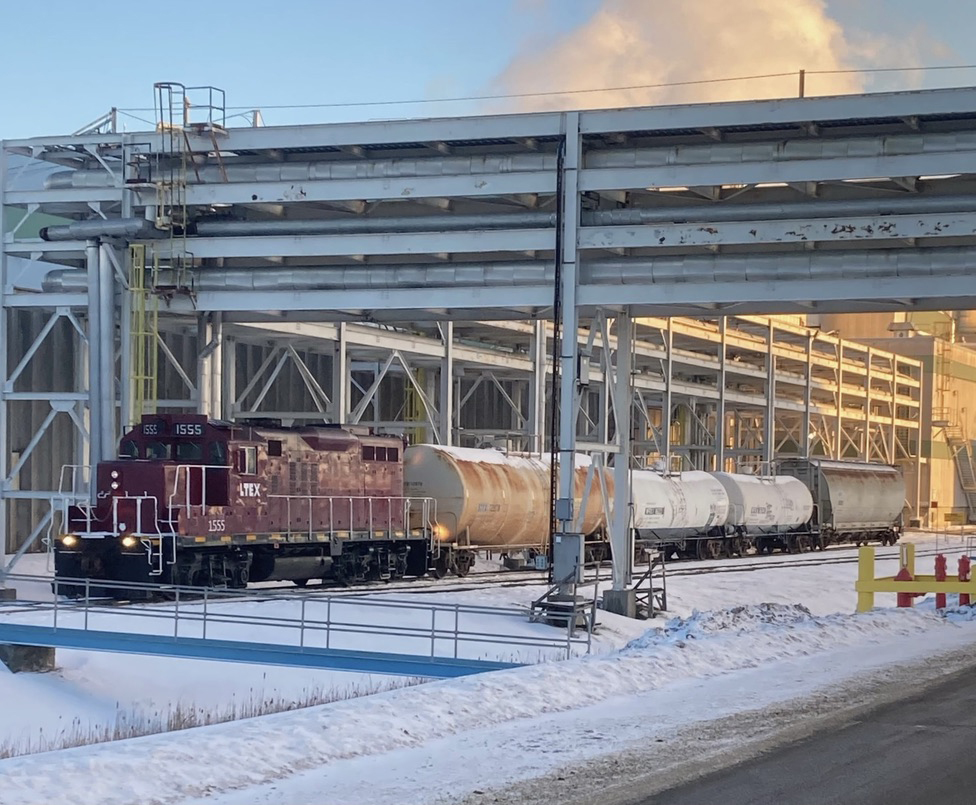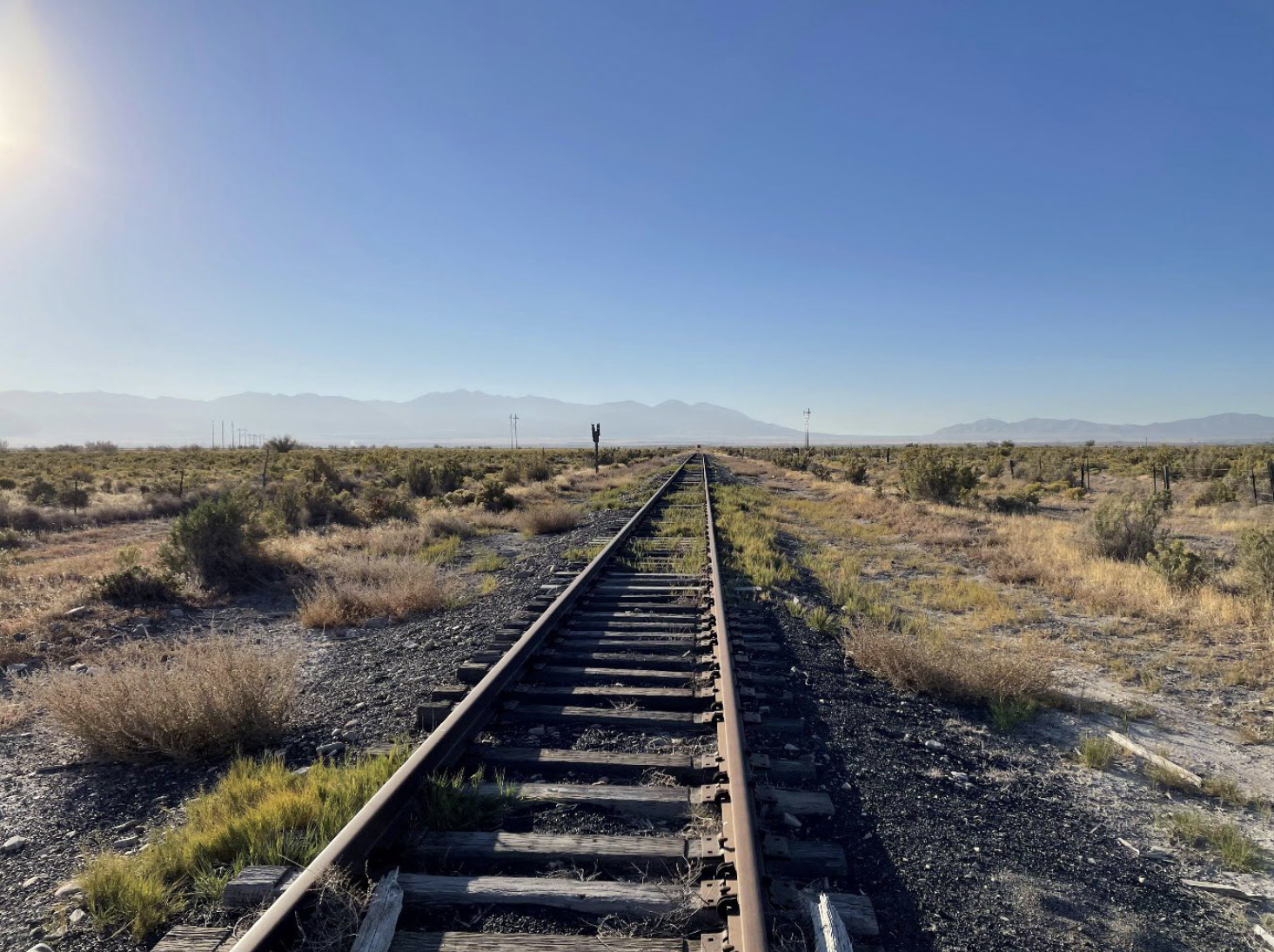Excellent On2 1/2 models of the Denver & Rio Grande Western’s class C-16 2-8-0 Consolidation are now available from Broadway Limited Imports. The models come with electronics to operate on DC or Digital Command Control (DCC) layouts without any modifications, and they include sound systems.
Note: On21/2 models are O scale (1:48 proportion) but they operate on HO gauge track, providing a nominal track gauge of 2 1/2 feet. In the case of this model, the prototype ran on 3-foot gauge track.
Between 1877 and 1882, Baldwin built 67 class C-16 Consolidations for the D&RGW, Grant built 28, and Baldwin produced virtually identical engines for other narrow gauge railroads. Many of these ex-Rio Grande locomotives wound up on smaller lines making this model a good choice for both prototype and free-lance modelers.
The model represents a rebuilt C-16 fitted with a steel cab, dual air compressors, and an extended smokebox as used from the late 1920s to the end of service in 1940.
Years of modifications gave each C-16 a distinctive appearance, so BLI’s models aren’t exact duplicates of any specific engines, although some have smooth domes and others retain the original decorative domes. All of these engines share the same tender.
One of the nicest features of this model is that the boiler shell is easy to remove by taking out three screws. All of the electronics are in the tender, and access to them is even easier as the shell is just a press fit on the frame.
Electrical pick-up is from all eight drivers and four tender wheels (the opposite side of each truck). A can motor with flywheel drives the second axle; power is transmitted to the other drivers via the side rods. Only the first and third driver sets are sprung.
As on the prototype the second and third sets of drivers are blind (without flanges) to aid in negotiating tight curves. Prototype blind drivers had wider tires so they could slide across the railhead and not drop off. This model’s blind drivers have a tapered inside edge, making the tread significantly narrower. All of the wheels matched the National Model Railroad Association HO standards gauge for wheel spacing and flange depth, while the tread width was within tolerance for On3.
With a three-ounce drawbar pull, the model can haul more than 20 narrow gauge cars, an adequate load for a C-16 even on level track.
The tender has a magnetic HO knuckle coupler mounted under the scale coupler box, so installing a working scale coupler will be relatively easy. Replacing the dummy front coupler with an operating coupler, such as those made by San Juan Car Co., will take some work.
The model ran very well straight from the box, but BLI recommends lubricating the gears before operating the locomotive. Like other BLI engines, the starting voltage is high, but it can be reduced through programming adjustments.
I tested the C-16 without changing the factory settings. The model started smoothly, and ran steadily at a scale 2.62 mph.
The DC speed range is excellent within the short voltage range. Current draw, despite the sound system, was remarkably low. Operation on DCC was equally good.
I tested the engine’s minimum radius on an HO layout. Broadway Limited Imports specifies an 18″ minimum radius for the C-16, but this is a bit tight. My sample engine ran forward in the clockwise direction without incident, but it repeatedly derailed going counter- clockwise. Traveling either way in reverse caused derailments on my 18″ radius loop. Repositioning the wiring between the engine and tender improved operation in reverse.
I later tested the engine on an HO layout with 24″-minimum-radius curves with excellent results.
The sound effects on the engine are good, but the initial volume was set too high. This was easily adjusted to a more realistic level using the volume control hidden under the tender’s water hatch.
If you hold the whistle on, you will get a long blast with the familiar rise and fall of pitch at the end. The bell sounds great, but when you turn it off, it continues to ring for several seconds, leaving you unsure if you’ve turned it off or not. The chuff is reasonably well synchronized with the drivers, and when you begin to slow down the brakes automatically start squealing, a nice touch of realism.
With DCC you can apply the brakes using function 7, as well as initiate a coupling sound with F3, blower hiss with F4, and various other air and steam sounds with functions 9 through 12, which vary depending on whether the model is stopped with the power on, or moving in forward or reverse.
Visually, the overall effect of the engine is quite pleasing. The model of no. 278 is black with graphite on the smokebox and firebox. Its major lettering is neatly applied and correct, but the small safety warnings and tender capacity are missing. The side rods and valve gear are blackened metal. The whistle and pop valves are bright plated brass, including their base. A quick touchup with black paint on the base and valves will make these parts look more realistic. The Pennsylvania and colorful holiday paint schemes are fictitious, but the rest of the offerings are legitimate schemes used on the C-16s.
The locomotive and tender are very close to scale, except of course for the wheel gauge. The tender closely resembles that of no. 278 around 1940, though others were similar. The only significant error in the locomotive is the shape of the sand and steam domes. Their bases should be almost the same diameter as the bottom decorative ring instead of matching the smaller body diameter.
Compared to recent HO mass-production steam locomotives, the detailing is something of a disappointment. The boiler piping is crisply executed, but the air lines don’t reach the fittings on the pumps. Having the piping cast into the boiler also greatly limits the redetailing potential.
The boiler correctly extends almost to the rear of the cab, and a steam gauge and manifold are mounted on the top.
The backhead is a nicely detailed casting. Noticeably lacking are the water and air lines between engine and tender. No piping runs to the air reservoir on the tender, though this could be added by the modeler.
Despite some limitations, Broadway Limited Import’s C-16 is sure to be a popular engine, just like its prototype. You get a DCC -equipped locomotive that’s accurately proportioned and can be picked up and set down on a DC layout to operate without modification. Moreover, on either layout the engine will chuff along and you can blow the whistle and ring the bell on one of the most widely used narrow gauge locomotives ever made. – George Sebastian-Coleman, custom layout builder and former MR associate editor
The Sidekick is a small controller that programs Broadway Limited Imports steam and diesel locomotives for operation on DC, and operates their sound systems. The controller’s push buttons handle the functions that are otherwise done by flicking the direction switch on a power pack. The Sidekick has a red light-emitting-diode (LED) and a pair of momentary-contact push buttons mounted in a 2″ x 2.62″ x 1″ case with four leads. The red 11″-long input leads are connected to the throttle, and the black 34″ leads go to the track.
The red button operates the locomotive’s horn or whistle, and the blue button actuates the bell. Press them simultaneously and you add a Doppler effect. – George Sebastian-Coleman
On21/2 C-16 Consolidation
Price:$269.00, Sidekick DC controller, $29.95
Manufacturer:
Broadway Limited Imports
P.O. Box 376
Ivy, VA 22945
www.broadway-limited.com
Description:
Plastic and metal narrow gauge
steam locomotive
Road names:
Denver & Rio Grande Western
(six different schemes)
Rio Grande Southern
Pennsylvania RR
Nevada County Narrow Gauge
Chicago, Milwaukee, St. Paul &
Pacific
Red or Green holiday special
(with Christmas sound effects)
Features:
Cab interior with backhead
DC or Digital Command Control
(DCC) operation
Die-cast boiler and chassis
Drawbar pull: 3 ounces
Dummy front coupler
Electrical pickup from eight drivers and four tender wheels
Five-pole can motor with flywheel
Minimum radius: 20″
Operating headlight
Quantum sound system with
dual speakers
Weight: 26.5 ounces – engine alone 16.5 ounces





